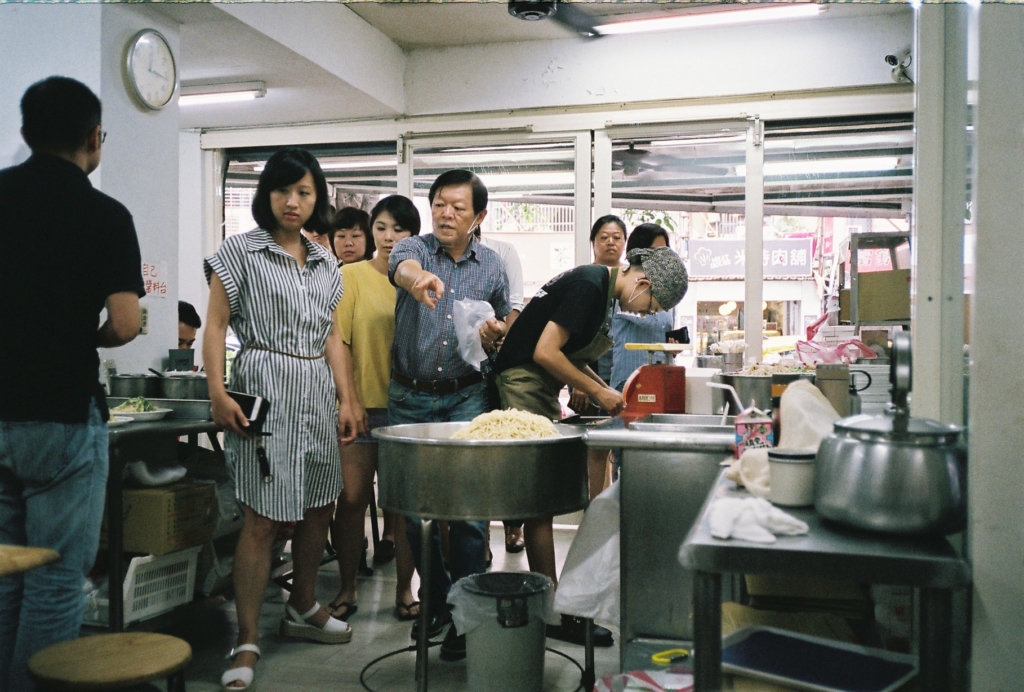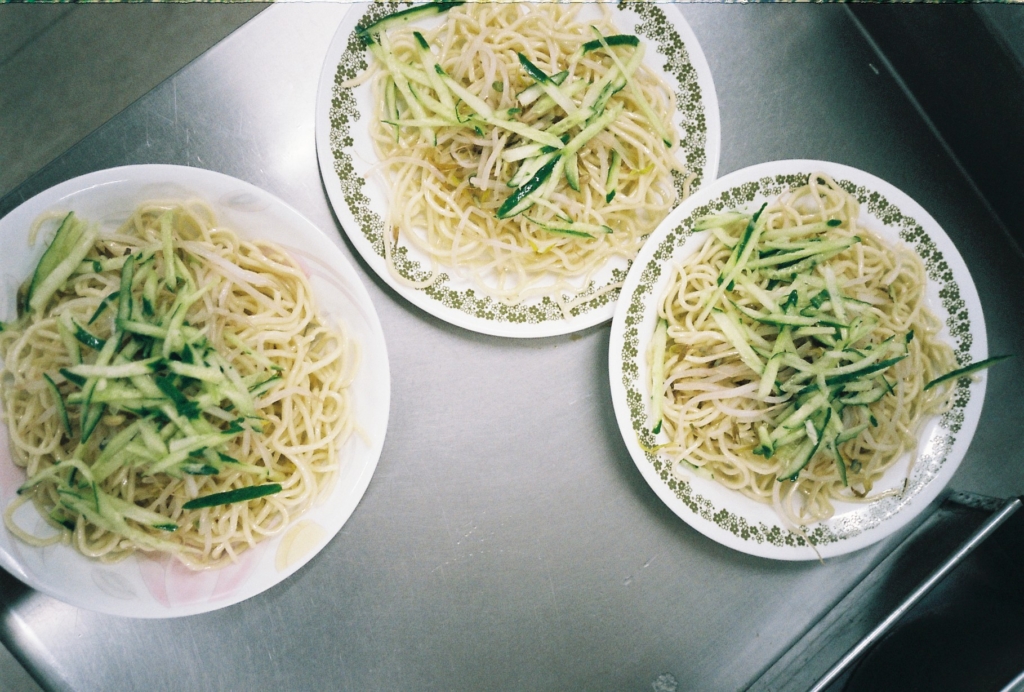I had never had Liang Mian before this trip to Taiwan. While most people who visit seem to have some kind of revelatory experience with Taiwanese soup dumplings (Xiaolongbao) I was seduced by the much humbler noodle dish Liang Mian, which doesn’t seem to have the same massive following (read: extended wait times) that Xiaolongbao joints seem to have (here’s looking at you, Din Tai Fung). Liang Mian has managed to fly under the radar in the West, and I can’t figure out why. Perhaps it’s due to the fact that this cold dish pairs so beautifully with the extreme heat and humidity of southeast Asia and would be a bit out of place in more temperate regions. Whatever the case, do yourself a favor and treat yourself to this uncomplicated and refreshing dish when the temperature starts rising. Or any other time, really.
Liang Mian is a simple dish that’s easy to modify, so it makes for great street food. If you like the main building blocks of the dish, it’s fun to try different variations from vendors around the city. And Liang Mian isn’t limited to Taiwan, it’s a well known dish throughout China and parts of Southeast Asia. The main components of the dish that seem to be relatively consistent are cold noodles, crunchy julienned cucumber, and a creamy peanut sauce that’s made more complex by additions such as chili peppers, sesame oil, or soy sauce.

We tried Liang Mian in a few different places, but the best we had by a long shot were off the street or in neighborhood joints catering not to tourists, but for the midday community lunch rush. We tried this dish in a number of places throughout the city, and vastly preferred the ones without air conditioning or cloth napkins. One highlight for us was Szechuan Liang Mian, a small noodle joint in the backstreets around the Ximending Night Market run by a recently arrived couple from Szechuan Province, China. Besides being extremely accommodating, offering us a place to sit and a meal a half hour after they had officially closed, they made us a plate of their take on the dish, with just a touch of heat from their homemade Ma La spice mix. We had three plates of Liang Mian between the two of us. Also, file this meal under budget travel — each plate cost about $1.47.


Another great place was 屏東任家涼麵, or Cold Noodle Restaurant, which we stumbled across as we were headed to Fujin Street. If you want to try this dish, Cold Noodle Restaurant is a no brainer, and we learned after-the-fact that they’re quite a big deal with Asian food bloggers. Their listing can be found as a recommendation in Japanese and Chinese food guides to Taiwan, though English speakers have so far been left hungrily in the dark.

This was your classic Liang Mian, served assembly line style in obvious anticipation of a flood of customers. The restaurant itself is unadorned, with mostly bare walls and simple low wooden stools, but it was clean, efficient, and most importantly, serves probably the best plate of cold, creamy, crunchy Liang Mian we had the whole trip. The owner was also kind enough to allow us to take photographs during a break in the line, and we bonded with one of the servers there over old-school film photography.

I am obviously no expert in Taiwanese cuisine, as evidenced by the fact that I didn’t even know this dish existed for the first 30 years of my life, but if you’re hankering to make this at home, here’s a recipe that looks good (https://tastyasia.net/2012/07/26/liang–mian-%E5%87%89%E9%9D%A2/) and which I’ll be trying to make when we’re back in New York. Also, I’m happy to say that Liang Mian is usually (usually) vegan. Enjoy!
